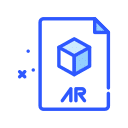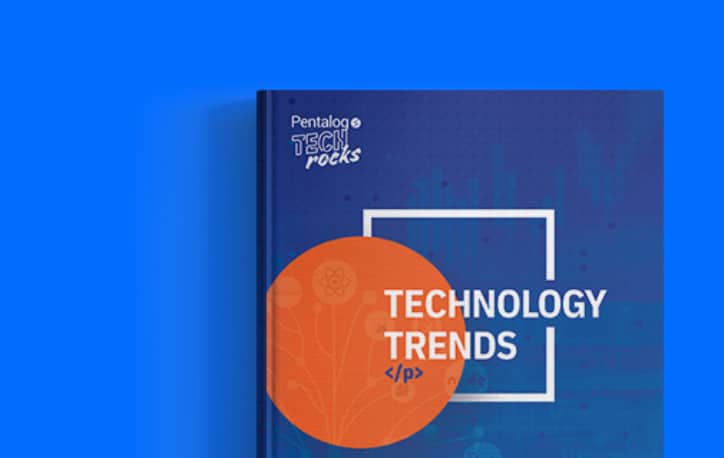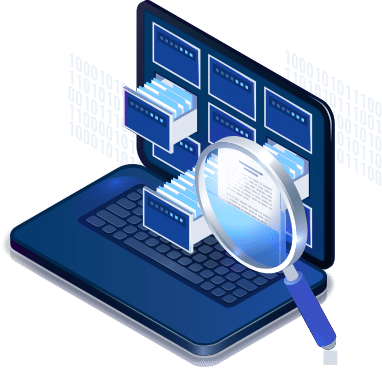OpenRefine is an impressive open-source tool – but it’s not built for enterprise-scale data quality issues.
If you’re tidying up small datasets or fixing column formatting in spreadsheets, OpenRefine can work well. But when you’re wrangling millions of messy, duplicate-filled, inconsistent records across CRMs, ERP systems, cloud apps, or databases, you’ll quickly hit its limits.
That’s where Data Ladder steps in with DataMatch Enterprise (DME).
In this post, we break down how the two tools compare – so you can see where each fits, and why OpenRefine’s features and scalability may not suffice for enterprise-level data quality challenges.
DataMatch Enterprise vs. OpenRefine – Who They’re Built For
OpenRefine is designed for users working with flat files like CSVs, Excel sheets, or TSVs. Its sweet spot is one-off, manual data cleanup tasks, like splitting columns, trimming whitespace, and clustering similar values. It also supports column-level transformations using GREL.
DataMatch Enterprise (DME), on the other hand, is an enterprise data quality tool built for teams that need to match, deduplicate, standardize, and cleanse data across multiple sources – accurately and at scale.
| Feature | OpenRefine | Data Ladder (DataMatch Enterprise) |
| Primary Use | Interactive cleanup of small datasets | Enterprise-grade data matching, cleansing, deduplication, standardization, and survivorship |
| Data Sources | Flat files only (CSV, TSV, Excel) | Flat files + databases, CRMs, ERPs, APIs, cloud and on-premise systems |
| Audience | Analysts, researchers, developers | Data stewards, operations, IT, BI, and compliance teams, business users |
If you’re just tidying up a CSV file with 2,000 rows, OpenRefine could be a solid pick. However, if you’re looking to standardize, match, deduplicate, or merge millions of records across systems like Salesforce, NetSuite, or internal SQL databases, you will need more horsepower – and that’s exactly what Data Ladder offers.
Data Matching: Where OpenRefine Taps Out
One of the key OpenRefine limitations is that while it supports clustering to find similar values (like “Jon Smith” vs. “John Smith”), it’s a far cry from true entity resolution. There’s no built-in support for phonetic matching, composite logic, survivorship rules, or intelligent deduplication.
Data Ladder delivers all of this—and more.
Key Record Matching Features of Data Ladder
- Fuzzy, phonetic, numeric, and domain-specific matching
- Rule-based logic to customize how records are compared
- Composite matching (e.g., matching on Name + DOB + Address)
- Survivorship logic to select the most accurate record
- Real-time match previews before finalizing merges
For complex datasets – such as when one person might appear five different ways across systems – OpenRefine might flag the variations, but it lacks the entity resolution feature needed to fix them.
That’s what Data Ladder’s DataMatch Enterprise was built to do.
| Data Ladder | OpenRefine |
| Utilizes advanced fuzzy, phonetic, exact, composite logic; capable of handling complex issues like out-of-order text, fused words, missing letters, and multiple errors. | Employs basic clustering techniques, which may not handle complex matching scenarios effectively. |
| High precision and recall across messy, multi-field data, ensuring that more matches are found and grouped accurately. | OpenRefine matching tool is limited in handling variations and errors in data entries. |
In internal benchmarks, DataMatch Enterprise consistently identified over 70% more matches compared to other data matching tools.
Performance and Scalability
OpenRefine runs locally and loads everything into memory. That’s fine for small files, but once you get close to a million rows, it starts to choke. There’s no built-in support for parallel processing, memory optimization, or distributing workloads.
Data Ladder is engineered for enterprise throughput. It offers:
- In-memory engine and multi-threaded architecture optimized for datasets with 100M+ records
- Batch and real-time processing
- Parallel processing for faster throughput
- Support for structured, semi-structured, and unstructured inputs
Organizations cleaning and matching tens of millions of rows across systems need infrastructure that scales seamlessly. That’s Data Ladder’s lane.
| Data Ladder | OpenRefine |
| Designed to handle millions of records efficiently with in-memory processing. | Performance often begins to degrade with large datasets |
| Suitable for all sizes of business; even enterprise-scale data matching and cleansing tasks. | Suited for small to medium-sized datasets. |
Automation and Reusability
OpenRefine lets you record data transformation steps and export them as JSON files. These “operation histories” can be reapplied to other datasets – but only manually.
If you want to automate them, you’ll need to write custom scripts or embed OpenRefine in a larger pipeline using the command line or third-party tools. That’s doable, but it’s not built for non-technical users, and it doesn’t scale well across multiple workflows or teams.
Data Ladder, by contrast, offers:
- Drag-and-drop workflow builders
- No-code/low-code automation
- Job scheduling and batch processing
- REST API integrations for automated pipelines
For teams needing to scale data quality across business units, manual replays and custom scripts aren’t sustainable. Data Ladder removes those bottlenecks with native automation and workflow design.
| Data Ladder | OpenRefine |
| Drag-and-drop workflows with scheduling and reusable configurations | Operation history can be replayed manually; reusability via JSON scripts or CLI requires technical setup |
| Native support for pipeline automation through REST API integrations for scheduling and orchestration | Requires custom scripting or embedding in external pipelines via command line; not built for automation at scale |
Governance and Support
OpenRefine is community-driven. It has strong documentation and plugins, but no official support, no SLA, and no built-in data governance features.
Data Ladder provides:
- One-on-one onboarding
- Support for compliance with data regulations
- Role-based access, audit logs, and traceability
- Custom rule tuning and configuration services
While these features matter to all organizations, they are non-negotiable for organizations or teams that handle regulated data, such as PII, financial data, or health records. If you’re one of them, Data Ladder will help you enforce consistency, security, and trust.
| Data Ladder | OpenRefine |
| Built-in features for PII handling, audit logs, traceability, and rule-based access control | No built-in governance features; limited traceability |
| Dedicated onboarding, configuration help, and expert support | Community-based support; no official SLA or guided onboarding |
Data Ladder vs. OpenRefine: Core Capabilities at a Glance
| Feature | Data Ladder | OpenRefine |
| Data Profiling | Advanced profiling to detect anomalies, missing values, and patterns across large datasets | Basic profiling through facets and filters |
| Data Cleansing | Automated cleansing with customizable rules, including standardization and validation | OpenRefine data cleaning tool requires manual transformations using GREL (General Refine Expression Language) |
| Data Matching | Advanced fuzzy, phonetic, and domain-specific matching across multiple fields | Basic clustering methods |
| Deduplication | Comprehensive deduplication with survivorship logic | Limited; lacks composite deduplication |
| Scalability | Can handle datasets with 100M+ records using in-memory processing | OpenRefine performance issues start to surface when dealing with large datasets |
| Deployment Options | Flexible deployment: on-premise, cloud, hybrid | Primarily desktop-based; limited remote server support |
| Integration | Broad with support for CRMs, DBs, ERPs, APIs, and cloud platforms; fits seamlessly into existing stacks without re-architecture | Standalone application with limited integration capabilities |
| User Interface | Intuitive drag-and-drop UI; designed for both technical and business users | Web-based interface; may require scripting for complex tasks |
| Support & Services | Dedicated support with guided onboarding and custom rule configuration | Community-driven support; primarily self-service |
When OpenRefine Is Enough – and When It’s Not
| Scenario | Use OpenRefine | Use Data Ladder |
| Cleaning up small CSV files | ✅ | |
| Clustering similar values in a spreadsheet | ✅ | |
| Cleaning + deduping customer data from multiple CRMs or databases | ✅ | |
| Entity resolution across systems | ✅ | |
| Need compliance + auditability | ✅ | |
| Working with 10M+ records | ✅ | |
| Automating data quality pipelines | ✅ | |
| Cleaning data from a CRM export for a marketing campaign | ✅ |
OpenRefine vs. Data Ladder – Choosing the Right Fit for Your Real-World Data Quality Needs
OpenRefine is great at what it does. But what it does is limited. For teams doing manual file cleanups, it’s a helpful utility. But when your data needs become business-critical – across systems, at scale, and under governance requirements – you need a more comprehensive solution.
That’s what Data Ladder offers with DataMatch Enterprise (DME).
With scalable architecture, transparent matching logic, and automation features, DME helps teams solve real-world data quality problems with ease and speed. Designed to handle (and tested for) 100M+ records, DME serves as a powerful OpenRefine alternative for organizations working with large, complex datasets. And unlike tools that require custom build-outs or re-architecture, DME integrates cleanly into your existing systems, allowing you to improve data quality without disrupting your tech stack.
Want to see it in action?











































